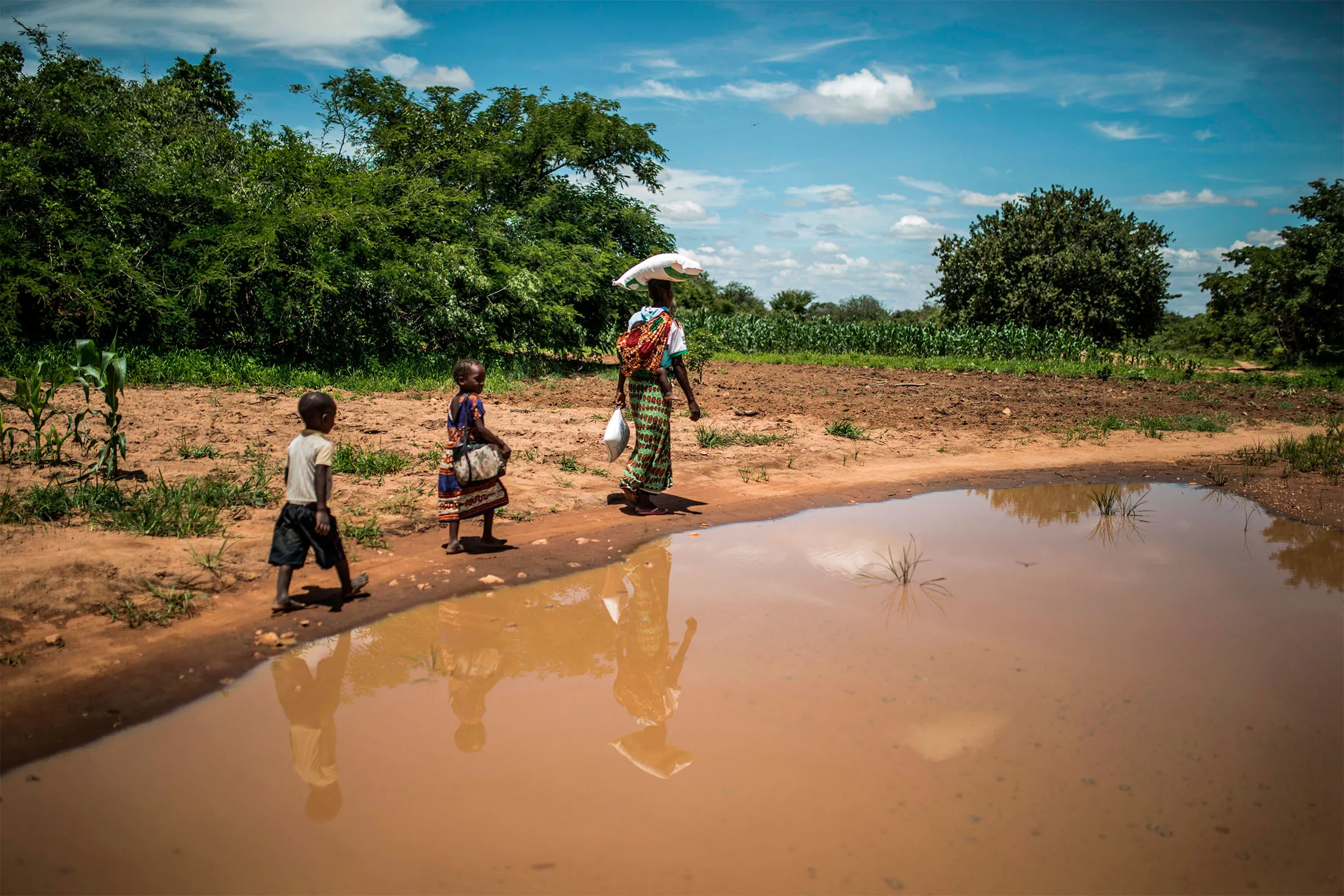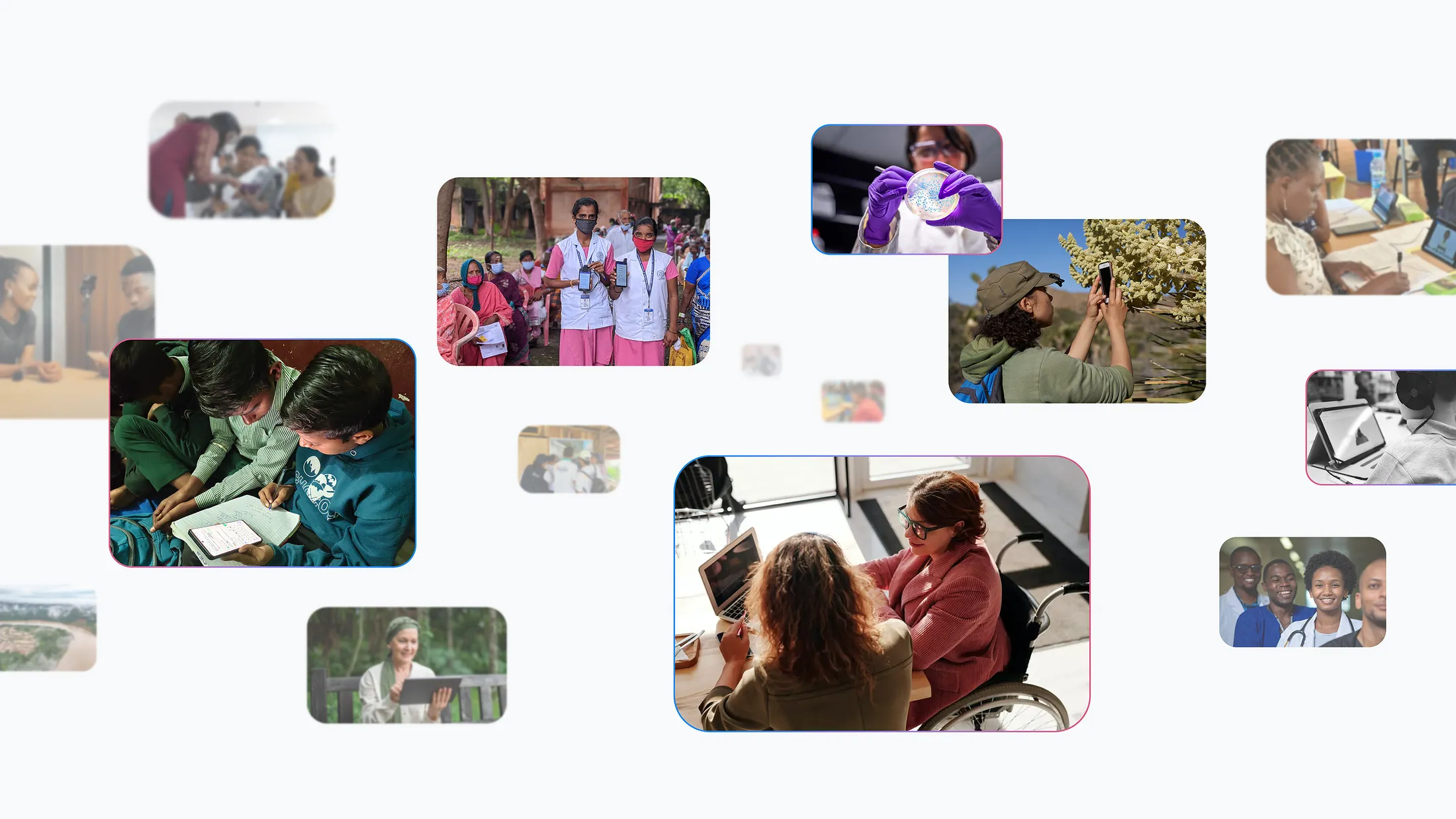In the sun-baked fields of sub-Saharan Africa, where erratic rains and scorching droughts have long dictated the rhythm of life, a quiet revolution is underway. Artificial intelligence (AI) is arming smallholder farmers with unprecedented tools to predict weather patterns, optimize resources, and safeguard crops against the whims of climate change. From AI chatbots in Malawi offering real-time pest alerts to drone-powered analytics in Kenya forecasting soil health, these innovations are not just futuristic promises; they’re delivering tangible resilience to the continent’s 33-50 million smallholder farms, which produce up to 80% of Africa’s food supply. As global temperatures rise, African agriculture vulnerable to land degradation that could render half of cultivated land unusable by 2050 stands at a crossroads, with AI emerging as a lifeline for food security and sustainable growth.
The urgency is stark: Climate-induced events like cyclones and El Niño droughts have ravaged harvests across the region, exacerbating food insecurity for millions. Yet, private investment in agriculture-related tech has surged from $10 million in 2014 to $600 million in 2022, fueling a wave of AI-driven solutions tailored to Africa’s unique challenges. “AI is no longer a luxury; it’s a necessity for survival,” says Abdel Aziz Belal, president of the African Society for Precision Agriculture. “Drones and AI analytics remove the guesswork, detecting problems early and preventing yield losses that could wipe out a season’s income.”
Pioneering Tools: From Chatbots to Satellite Insights
At the forefront are mobile apps and platforms democratizing access to data once reserved for large agribusinesses. In Malawi, thousands of farmers like Alex Maere are turning to the Ulangizi AI chatbot, developed by non-profit Opportunity International and backed by the government. Launched amid a string of cyclones and droughts, Ulangizi provides generative AI advice on crop diseases, fertilizer designs, and even affordable equipment sourcing all in local languages via simple SMS or voice queries. “Before, we’d lose entire fields to unseen pests. Now, the phone tells us exactly when and where to act,” Maere shared during a field demonstration in Mulanje district last July.
Similar breakthroughs are unfolding elsewhere. The EU-funded SAFE4ALL project’s Uliza-WI app, rolled out in Ghana and beyond, uses AI to deliver location-specific forecasts from medium-range weather predictions to seasonal outlooks guiding farmers on optimal planting, weeding, and fertilizing times. Hydroclimatologist Spyros Paparrizos of Wageningen University, the project’s coordinator, explains: “Agriculture sustains over 2.5 billion people globally, but African rural communities face the brunt of climate volatility. Uliza-WI empowers them with tailored, two-way advice, turning data into actionable resilience.” Early pilots report yield boosts of 20-30% by minimizing water waste and aligning practices with hyper-local conditions.
In East Africa, the Global Green Growth Institute (GGGI) unveiled the #AAA Atlas and #PEPA.AI tools at a Nairobi workshop on October 6, uniting policymakers, researchers, and agritech experts to craft data-driven action plans for climate-smart farming. These platforms leverage AI for real-time climate monitoring and precision strategies, with GGGI’s Africa Regional Office highlighting their role in “rewriting Africa’s climate future” through resilient food systems. Meanwhile, Kenya’s Agricultural Observatory Platform, scaled via the World Bank’s Food System Resilience Program, now serves 1.1 million farmers with high-resolution insights, optimizing harvests for another 6 million across West Africa.
Youth-led innovations are accelerating this shift. At a recent FAO-hosted X Spaces event, young agripreneurs from Zimbabwe, Nigeria, and Kenya showcased AI solutions like Klima360, which fuses weather, soil, and market data to forecast risks for farmers and insurers. Tafadzwa Chikwereti of a Zimbabwean startup emphasized: “AI analyzes drone data for targeted recommendations, slashing resource use while enhancing yields and climate resilience. African youth are leading this equipped with skills to transform agrifood systems.” Tools like Darli AI further support regenerative practices in 27 languages, overcoming literacy barriers to mentor millions on sustainable techniques.
Policy Momentum: Aligning AI with Continental Goals
These efforts align with ambitious frameworks like the African Union’s Comprehensive Africa Agriculture Development Programme (CAADP), which targets 25 million farm households adopting climate-smart agriculture (CSA) by 2025 under the “Vision 25×25” initiative. The Kampala Declaration further aims for a 45% agrifood output increase by 2035, with 10% of national budgets funneled into agriculture and a push for 6% annual growth. AI features prominently, from intelligent sensor networks boosting yields via real-time monitoring to gene-edited, climate-resilient crops accelerated by machine learning.
The Brookings Institution’s Foresight Africa 2025-2030 report underscores digital agronomy’s impact, citing tools like RiceAdvice and NextGen Agroadvisory that have lifted wheat and rice yields by 25% in Ethiopia, Nigeria, and Mali through precise fertilizer and planting recommendations. CGIAR’s integration of big data and AI is breeding high-yield, nutritious varieties suited to diverse markets, while the AU’s Digital Transformation Strategy eyes 2030 goals for climate-resilient, environmentally sustainable systems.
Hurdles on the Horizon: Equity, Infrastructure, and Inclusivity
Despite the promise, challenges loom large. Limited digital infrastructure in rural areas widens the divide, with data scarcity and skill gaps hindering AI adoption.
Gender disparities persist: Women, who comprise much of Africa’s farming workforce, often lack access to these tools. Pamela Pali of the African Plant Nutrition Institute in Kenya calls for “closing the gender gap” through inclusive training and farmer-centric data governance. The AI4AFS Network advocates community-based models that weave in local knowledge, boosting productivity while supporting marginalized groups.
Experts like those at the International Livestock Research Institute (ILRI) stress aligning climate finance with AI to unlock sustainable systems, as highlighted at the Africa Climate Summit. Regulatory frameworks for ethical AI, data sovereignty, and regional labs are essential to mitigate biases and ensure accountability.
A Resilient Harvest Ahead
As Africa’s population swells toward 2.5 billion by 2050, AI’s role in precision agriculture from satellite crop monitoring to predictive disease modeling offers a pathway to break the cycle of vulnerability. Initiatives like the Fostering Digital Villages project in Senegal, Rwanda, and Niger are already embedding AI in rural communities, fostering productivity and resilience. For farmers like Maere, the message is clear: “This tech isn’t replacing us, it’s empowering us to feed our families and our continent.”
With continued investment and collaboration, AI could propel Africa toward the UN Sustainable Development Goals, turning climate threats into opportunities for inclusive prosperity. As Belal puts it, “The only way to sustainably feed our growing population is to embrace these smart solutions now. The fields of tomorrow depend on it.




